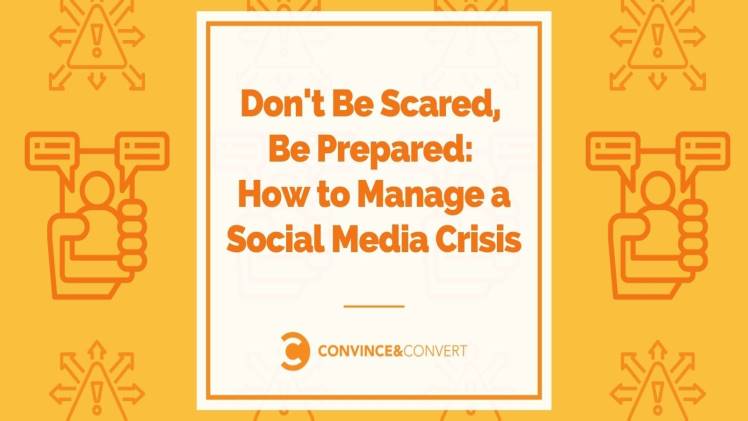7 Tips for Crisis Management on Social Media

No single approach works perfectly when it comes to crisis management on social media. But there are some key steps you can take in order to minimize the damage and restore consumer faith in your brand.
1. Set Up Your Crisis Team for Success
The initial step in managing a social media crisis is making sure all members of your team understand how to handle it and follow the protocol. Doing this helps reduce the possibility that someone could make an error and spread inaccurate information about the situation.
2. Define Your Message Protocol
To establish your message protocol, create a template that outlines how your brand should handle issues and questions. This document should be approved by both your crisis communications team leader and legal department; this will serve as guidance for your team when communicating with audiences, giving leaders all of the knowledge needed to move forward.
3. Establish a Monitoring Process
A well-designed monitoring process can help you avoid crises from ever arising in the first place, alert your team to potential issues and provide them with access to necessary resources for resolution. Furthermore, you’ll have the capacity to measure and assess the success of your response efforts.
4. Spot a Problem Before It Occurs
Be on the lookout for negative incidents or conversations before they escalate into major issues, and listen carefully and analyze conversations surrounding your brand, product or service to identify potential problems before they occur. This can be done through careful listening to and analyzing conversations surrounding these topics.
Please visit for more information: Jio Rockers Kannada
5. Monitor a Variety of Social Channels
In addition to Facebook, Twitter and Instagram, you should also be active on other channels such as YouTube, Pinterest and Tumblr. These sites offer an intimate experience with your audience so they’re ideal for responding to customer complaints or concerns.
6. Utilize Tools That Facilitate Rapid Replies
A great option for quickly responding to questions or remarks from your audience is a chatbot. These can answer many common queries your community might have, and they are updated in real-time with the current situation and your responses.
7. Practice Patience and Avoid Confrontation
Negative people often feel empowered to post negative messages on social media, so it’s essential to remain patient and avoid confrontation. Though it may be tempting to argue back, doing so only serves to escalate the situation and cause further damage.
Please visit for more information: Movierulz Page
8. Focus on Listening
When responding to customer complaints on social media, it’s beneficial to stay abreast of your analytics and monitor sentiment and trends. This could involve simply monitoring Facebook, Twitter and Instagram metrics or by using a tool which allows you to track mentions and other metrics in real-time across various social networks.
9. Refresh Your Content
After a crisis strikes, it’s an ideal time to update your social media content with an up-to-date look. Doing this helps minimize the damage from the crisis and makes posts more relatable for the audience you are trying to reach.

